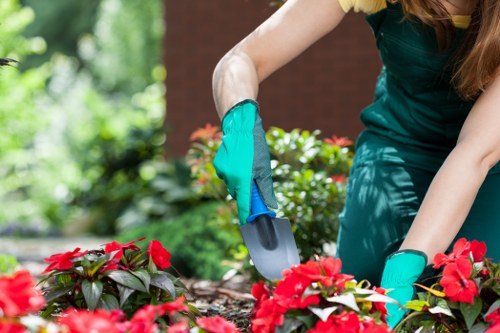Comprehensive Guide to Tree Lopping and Removal in Poplar

Understanding Tree Lopping and Removal
Tree lopping and removal are essential practices in maintaining the health and safety of your property. **Poplar trees** are known for their rapid growth and resilience, but even these robust trees can pose challenges if not properly managed. Whether you're dealing with overgrown branches or need to remove a tree entirely, understanding the process is crucial.
Tree lopping involves cutting back the branches of a tree to control its shape and size. This practice can enhance the tree's health, prevent damage to nearby structures, and improve the aesthetic appeal of your landscape. On the other hand, tree removal is the complete extraction of a tree from its root system, typically necessary when a tree is dead, diseased, or poses a significant hazard.
Poplar trees, with their tall stature and extensive branching, require careful consideration before undertaking lopping or removal. Improper handling can lead to structural weaknesses in the tree or environmental damage. Therefore, it's imperative to engage professional services to ensure the job is done safely and effectively.

Benefits of Professional Tree Lopping Services
Opting for professional tree lopping services offers numerous advantages. Firstly, **safety** is a paramount concern. Trained arborists have the expertise and equipment to handle trees of all sizes without risking injury to themselves or your property.
Secondly, professionals can ensure the health of your poplar trees. Through proper pruning techniques, they can eliminate diseased or damaged branches, promoting vigorous growth and longevity.
Additionally, professional loppers can enhance the aesthetic appeal of your landscape. Well-maintained poplar trees can significantly boost the visual appeal of your property, adding both beauty and value.

When to Consider Tree Removal
Despite their hardiness, there are circumstances when tree removal becomes necessary. Here are some common scenarios:
- Severe Disease or Infestation: If a poplar tree is afflicted with a severe disease or pest infestation, it may be beyond saving. Removing the tree can prevent the spread of the issue to other trees.
- Structural Damage: Storms, lightning strikes, or physical damage can compromise the structural integrity of a tree, making it hazardous.
- Obstruction: Trees that interfere with power lines, buildings, or other structures typically need to be removed to ensure safety and accessibility.
- Space Constraints: In urban settings, space is often limited. Overgrown poplar trees might need removal to make way for new developments or infrastructure.
In such cases, consulting with a professional tree removal service is essential to assess the situation and determine the best course of action.

Tree Lopping Techniques for Poplar Trees
Proper lopping techniques are vital to maintaining the health and appearance of poplar trees. Here are some key methods used by professionals:
- Thinning: This involves selectively removing branches to reduce the density of the tree's canopy, allowing more light and air to penetrate.
- Heading: Cutting back branches to a bud or lateral branch promotes the growth of new shoots, helping shape the tree.
- Reduction: Reducing the overall size of the tree by cutting back the main branches to a lateral branch of similar size helps maintain balance and structure.
- Deadwooding: Removing dead or diseased branches is crucial for preventing decay and potential hazards.
These techniques, when applied correctly, can enhance the tree's health, reduce the risk of damage, and improve its overall form.

Environmental Considerations
Trees play a significant role in the ecosystem, providing oxygen, improving air quality, and offering habitat for wildlife. Therefore, environmental considerations are paramount during lopping and removal.
When opting for tree removal, it's important to assess the environmental impact. Removing a poplar tree should be done responsibly, ensuring that replacement plants are considered to maintain ecological balance.
Furthermore, professional services often follow sustainable practices, such as recycling wood chips and using environmentally friendly equipment, minimizing the impact on the surroundings.
Regulatory Compliance
Before undertaking any tree removal or lopping, it's essential to check local regulations. Many regions have guidelines or permits required for tree removal to protect certain species and maintain environmental standards.
Preservation of Biodiversity
Preserving biodiversity is another crucial aspect. Poplar trees support various forms of wildlife, and their removal should be carefully planned to avoid disrupting local ecosystems.
Choosing the Right Tree Service Provider
Selecting a reputable tree service provider is essential for ensuring quality and safety. Here are some tips to help you make the right choice:
- Experience and Expertise: Look for companies with a proven track record in tree lopping and removal, particularly with poplar trees.
- Licensing and Insurance: Ensure the service provider is licensed and insured to protect against any potential damages or accidents.
- Reputation: Check reviews and testimonials to gauge the company's reliability and quality of service.
- Safety Measures: A good tree service provider should prioritize safety, using proper equipment and adhering to industry standards.
- Environmental Practices: Choose companies that follow sustainable practices, such as recycling wood and minimizing ecological impact.
Questions to Ask Potential Providers
When contacting tree service companies, consider asking the following questions:
- What is your experience with poplar tree lopping and removal?
- Are you licensed and insured?
- Can you provide references or examples of previous work?
- What safety protocols do you follow?
- How do you handle waste and debris from tree removal?
These questions can help you assess the suitability of a service provider for your specific needs.
Cost Factors in Tree Lopping and Removal
The cost of tree lopping and removal can vary widely based on several factors. Understanding these can help you budget accordingly:
- Size of the Tree: Larger trees require more labor, equipment, and time, increasing the cost.
- Location: Trees located in hard-to-reach areas or near buildings and power lines may incur additional charges.
- Health of the Tree: Diseased or infested trees might require specialized treatment before removal, affecting the price.
- Complexity of the Job: Intricate tree structures or those with complicated root systems can make the process more demanding.
- Disposal Fees: The cost of disposing of the tree debris can vary depending on local regulations and disposal methods.
It's advisable to obtain multiple quotes from reputable service providers to ensure you're getting a fair price for the services rendered.
Insurance and Guarantees
When budgeting for tree lopping and removal, consider the insurance and guarantees offered by the service provider. Comprehensive insurance can protect you from unforeseen damages, while guarantees can provide peace of mind regarding the quality of work.
Estimating the Total Cost
To estimate the total cost, request a detailed quote that outlines all potential expenses. This transparency helps prevent unexpected costs and allows for better financial planning.
Safety Precautions During Tree Lopping and Removal
Tree lopping and removal involve inherent risks, making safety precautions essential. Here are some measures professionals take to ensure the job is done safely:
- Using Proper Equipment: Tools like chainsaws, harnesses, and ropes are essential for performing the task safely and efficiently.
- Personal Protective Equipment (PPE): Safety gear such as helmets, gloves, goggles, and protective clothing guards against injuries.
- Planning the Job: Assessing the tree structure and surrounding area helps in strategizing the removal process, minimizing risks.
- Clearing the Area: Ensuring that the worksite is free from obstacles and bystanders reduces the likelihood of accidents.
- Expertise in Techniques: Skilled arborists employ proper cutting techniques to prevent the tree from falling unpredictably.
Emergency Preparedness
In case of unforeseen events during the procedure, having emergency protocols in place is vital. This includes having first-aid kits readily available and knowing how to respond to accidents swiftly.
Environmental Safety
Maintaining environmental safety involves protecting nearby plants, structures, and wildlife from the disruptions caused by tree lopping and removal.
Aftercare and Maintenance Post-Removal
Once a tree has been lopped or removed, proper aftercare ensures the continued health and safety of your landscape:
- Stump Removal: Removing the stump prevents regrowth and eliminates potential tripping hazards.
- Land Restoration: Filling the void left by the tree and planting new vegetation can restore the aesthetic and ecological balance.
- Debris Cleanup: Proper disposal of branches and wood chips keeps the area tidy and minimizes environmental impact.
- Ongoing Inspection: Regularly inspecting remaining trees helps in early detection of potential issues, allowing for timely interventions.
Engaging professional services for aftercare can ensure that all aspects of post-removal maintenance are handled efficiently.
Tree Health Monitoring
Continuous monitoring of the health of remaining trees is crucial. This proactive approach helps in identifying and addressing any emerging problems promptly.
Conclusion
Tree lopping and removal are critical practices in maintaining the safety, health, and beauty of your property. Poplar trees, while resilient, require professional care to manage their growth and address any issues effectively.
By understanding the benefits of professional services, recognizing when removal is necessary, and considering environmental and safety factors, you can make informed decisions that enhance your landscape and protect your investment.
Don’t compromise on quality—**contact us today** to ensure your poplar trees are maintained or removed safely and professionally.
Get Started with Expert Tree Services
Ready to enhance your property with expert tree lopping and removal services? **Book your service now** and let our experienced arborists take care of all your tree care needs.
